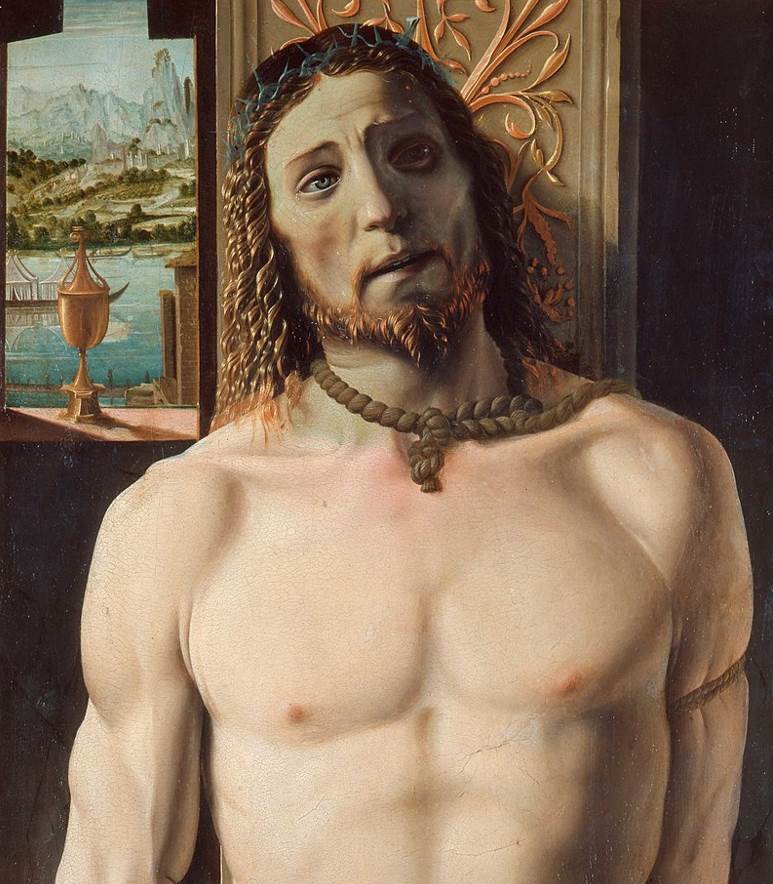While he started out as a painter, Donato Bramante soon realized that his true passion and talent was architecture. He introduced Renaissance architecture to Milan and designed various buildings for Ludovico Sforza, the Duke of Milan who also hired Leonardo da Vinci in the late 15th century.
After the Duke was kicked out of Milan by the French, he traveled to Rome and found a job with the best patron possible, Pope Julius II, who also engaged other famous Renaissance artists such as Michelangelo and Raphael.
His career eventually culminated in one of the most amazing buildings ever constructed, and even though he never completed it, became the main work he is remembered for.
In this post, we’ll take a closer look at 8 of the most famous Donato Bramante works, one of the most prominent architects of the Renaissance.
1. Santa Maria Presso San Satiro – Milan
While Donato Bramante had a minor architectural role in the design of this church in Milan, even though some sources claim that he designed the entire chapel, he created one of the most remarkable features of Renaissance architecture at the Santa Maria Presso San Satiro.
The main problem with the design of this church was that there was only about 90 centimeters (3 feet) space to integrate the choir at the back of it due to a road and other buildings in the area. Bramante resolved this by creating a “tromp l’oeil,” an image that creates an optical illusion of space.
Bramante’s tromp l’oeil, which he created between 1482 and 1486, is widely considered to be the first in architectural history.
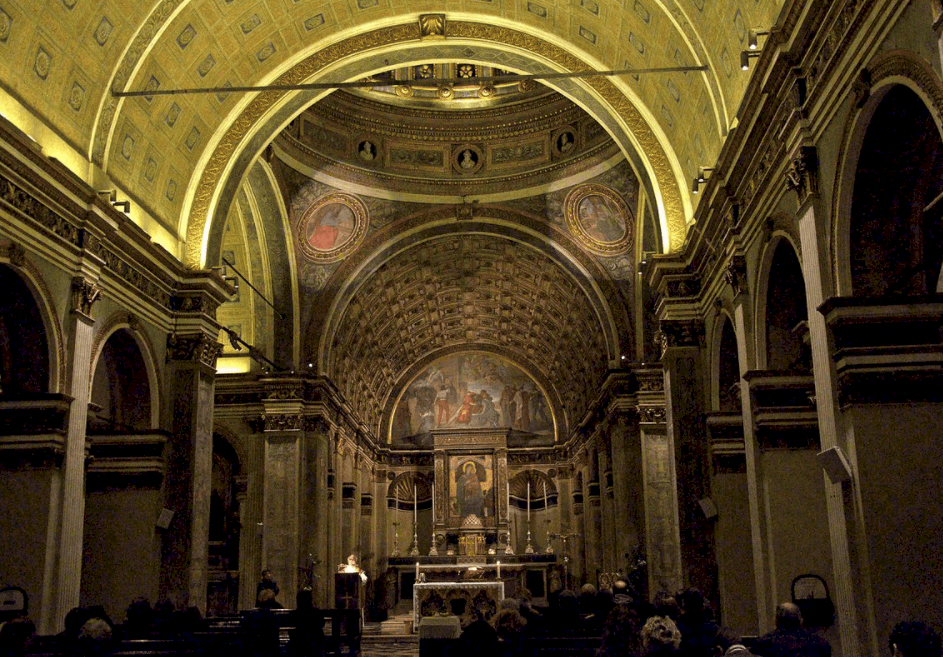
2. Santa Maria delle Grazie – Milan
The Santa Maria delle Grazie church in the city of Milan is world-famous because its dining room contains one of the most famous paintings of Leonardo da Vinci, The Last Supper.
This Dominican convent and church were commissioned by the Duke of Milan, and even though the main architect of the project was Guiniforte Solari who completed the Gothic church between 1463 and 1490, it was completely remodeled in the 1490s to serve as the main burial site for the Sforza family.
Donato Bramante has been credited with this remodeling which included a domed crossing and the choir of the church.
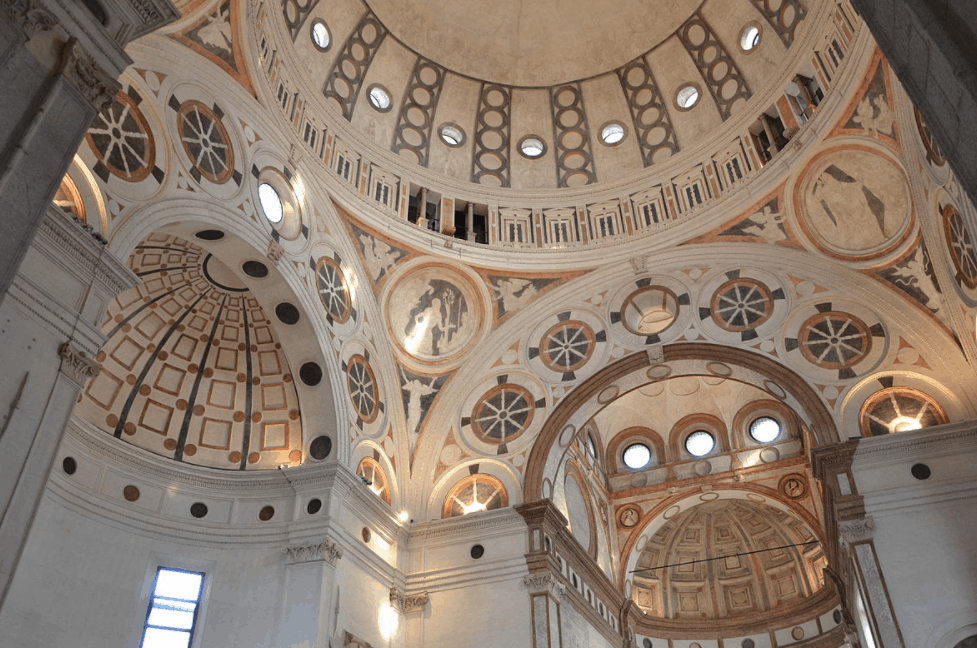
3. Palazzo della Cancelleria – Rome
The Palazzo della Cancelleria is a Renaissance palace in Rome and the former Apostolic Chancery of the Pope. It was constructed between 1489 and 1513 and is considered to be the earliest Renaissance palace in Rome.
One of its most fascinating features was designed by Bramante, namely the beautiful courtyard. The travertine of the palace of the ancient ruins of the Theater of Pompey, as well as the Egyptian columns of the inner courtyard.
The inner courtyard designed by Bramante was inspired by the Palazzo Ducale in Urbino, which was his hometown.
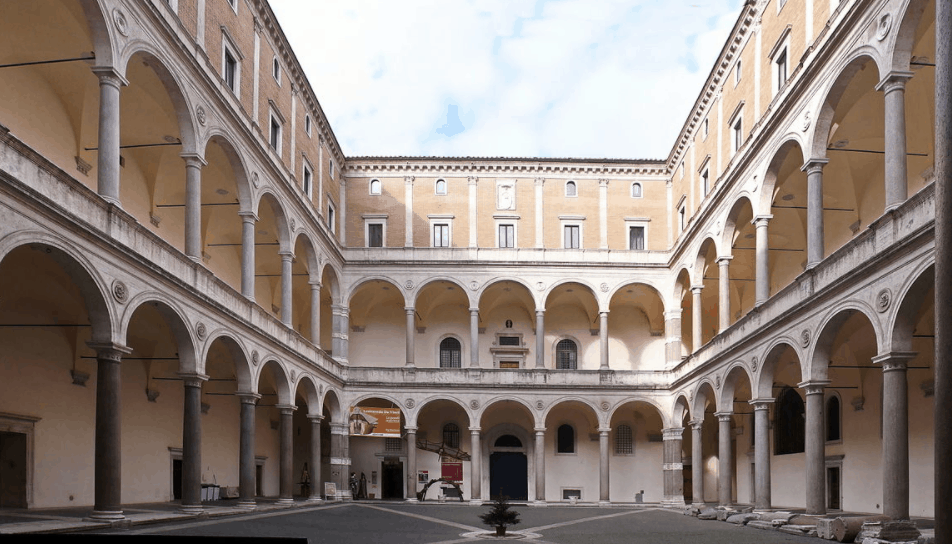
4. Tempietto at San Pietro in Montorio – Rome
One of Bramante’s most famous works was built in the early 16th century, probably around 1502, and is referred to as the “Tempietto.” This commemorative tomb in the form of a small temple is located in the courtyard of the San Pietro in Montorio church in Rome.
The church, as well as the Tempietto, were commissioned by Ferdinand and Isabella of Spain and even though the temple in the courtyard is relatively small, it’s considered to be one of the ultimate masterpieces of Renaissance architecture.
It’s considered an extension and perfection of the work of the founding father of Renaissance architecture, Filippo Brunelleschi.
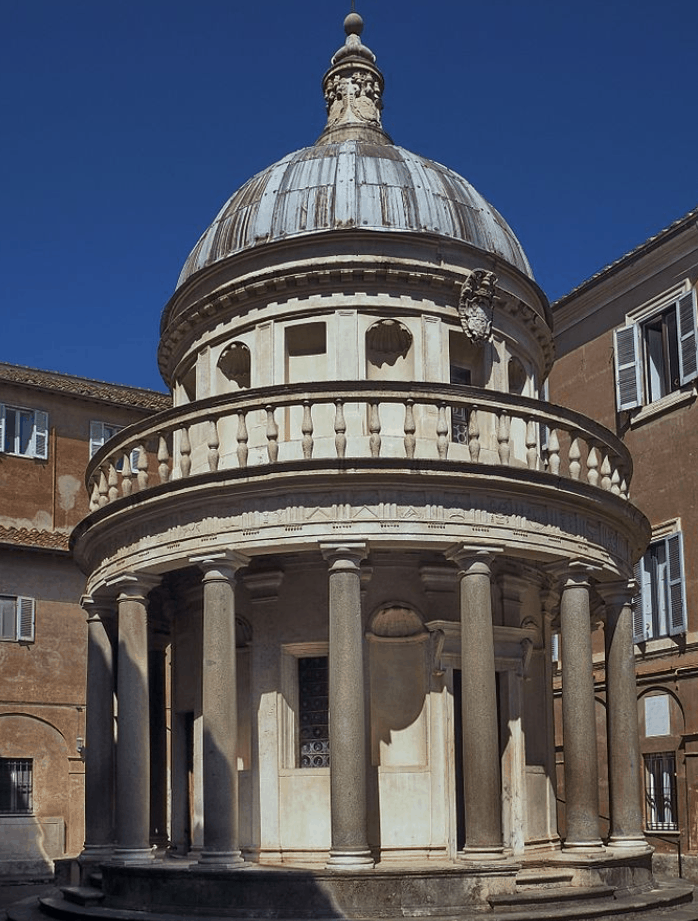
5. Santa Maria della Pace – Rome
One of the first Donato Bramante works in Rome was his “Bramante Cloister” of the Santa Maria della Pace church in Rome. The construction of the church itself started in 1482 after miraculous bleeding of an image of the Virgin Mary in 1480 on its location.
One of the arches of the church also contains a famous fresco by Raphael called “Sibyls receiving angelic instruction,” which was completed in 1514, nearly a decade after Bramante’s cloister was completed as it was built between 1500 and 1504.
The cloister is remarkable because it contains two stories with columned arcades, with the second story having columns in between the lower story’s arches as well.
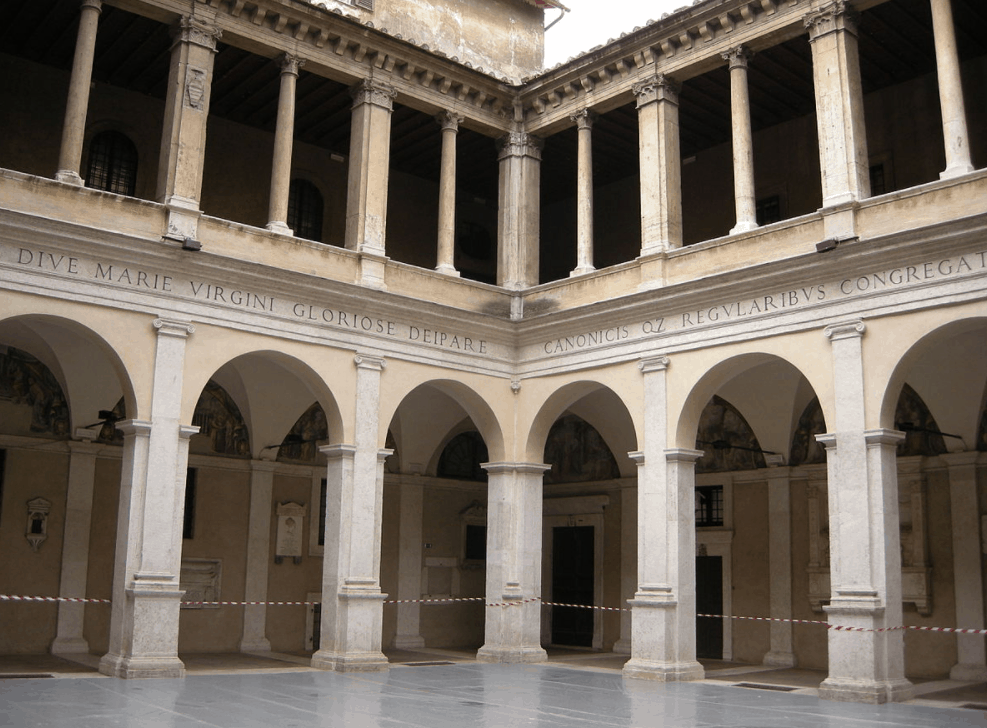
6. Bramante Staircase
One of the most iconic Donato Bramante works is definitely the so-called “Bramante Staircase.” It’s located in a square tower of the Belvedere Palace of Pope Innocent VIII and is now part of the Vatican Museum.
The staircase was designed with a double helix which allowed the pope to simply remain in his carriage while traveling up the stairs to his private residence.
This original staircase was constructed in the year 1505 and is not open to the general public but can be visited on private tours. A modern version of the staircase was inspired by the original and constructed in 1932 and is part of the Pio-Clementine Museum. It’s one of the most iconic monuments and the final part of the Vatican Museum tour.
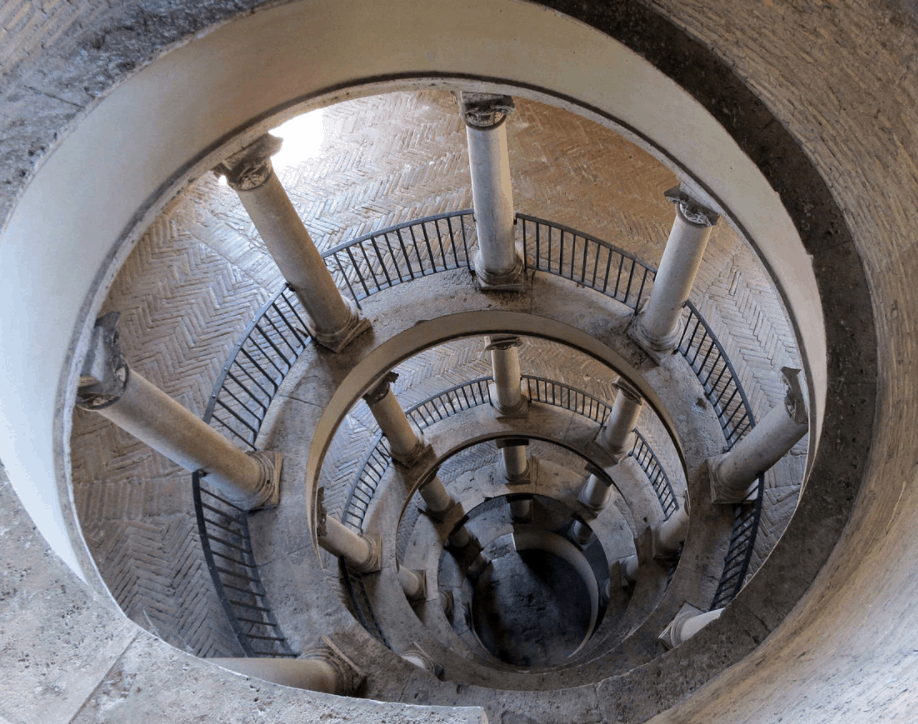
7. St. Peter’s Basilica – Rome
The career of Donato Bramante culminated in a commission for a building that has been described as “the greatest of all churches of Christendom,” St. Peter’s Basilica in Vatican City in Rome.
He didn’t get the commission for the largest church in the world without putting in some effort, though, because it was subject to an architectural competition, which he ended up winning. His design of the fabulous dome, which is the most prominent feature of the building, moved away from the design of that of the Pantheon in Rome and was more inspired by Brunelleschi’s dome of the Florence Cathedral.
Bramante envisioned that the main dome should be surrounded by 4 smaller domes and on each corner, there was to be a tower so the overall plan looked square.
The groundbreaking of St.Peter’s Basilica happened on April 18, 1506, but unfortunately, Bramante died in April of the year 1514, so he never saw his work completed. Michelangelo has been credited with the ultimate design, together with a large number of supporting architects who all made small changes to the original design by Donato Bramante.
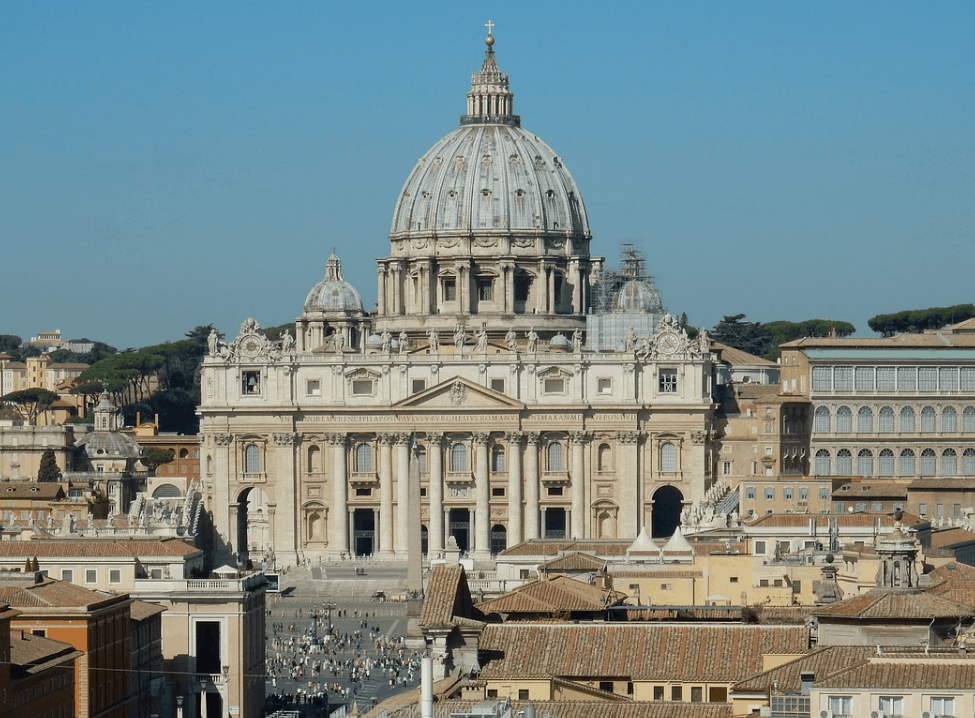
8. Christ at the Column
Christ at the Column (1490) is considered to be the only surviving panel painting by the hand of Donato Bramante. Although he was initially trained as a painter in Urbino, his talent for architecture quickly exceeded his painting skills.
This just shows how much talent as an architect the man really had because he was quite an amazing painter as well. This is emphasized by the quality of his only extant panel painting, a work depicting Jesus Christ tied to a column.
The mastery of perspective in combination with the expressive tension felt by Christ just before he is about to get punished makes this one of the most fascinating Donato Bramante works.
